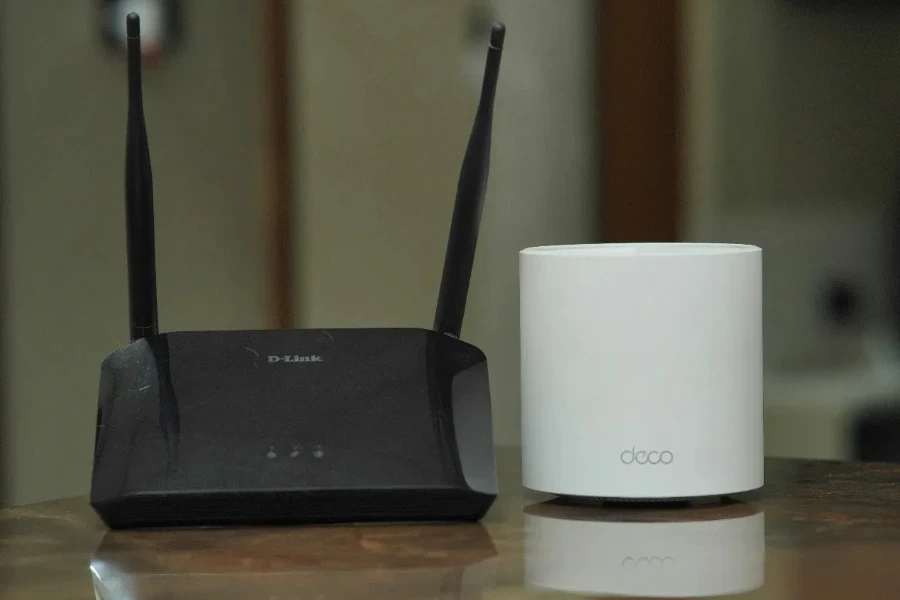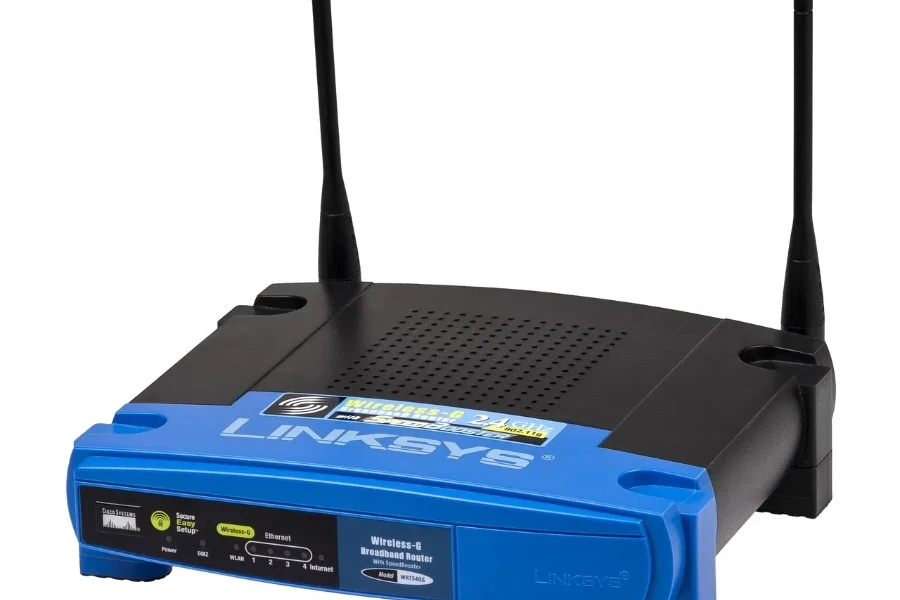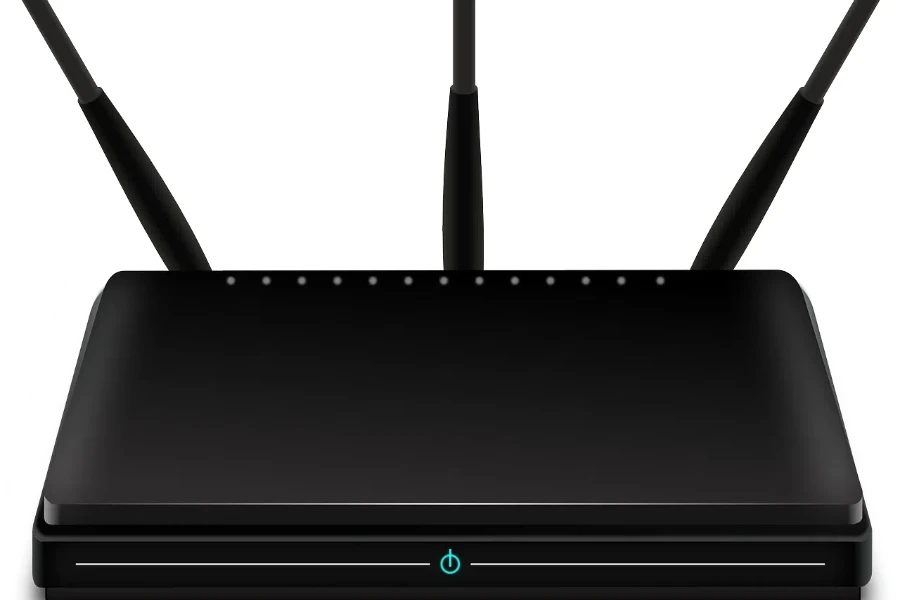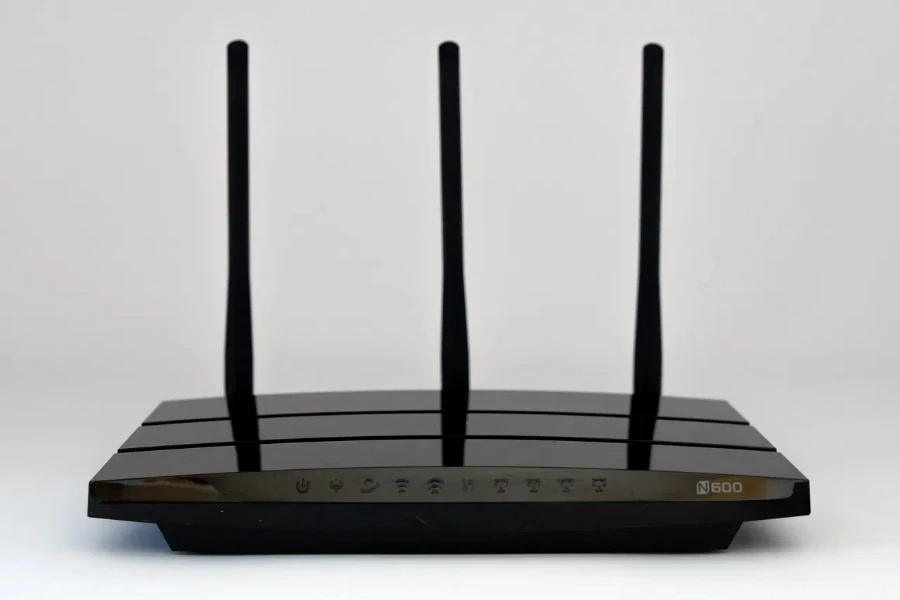The global market for internet modems is experiencing rapid growth, driven by advancements in technology and increasing demand for high-speed connectivity. By 2030, the cable modem market alone is projected to reach USD 11.8 billion, reflecting a CAGR of 5.5%. For business buyers, understanding the latest trends and key factors in modem selection is crucial for staying competitive.
Table of Contents:
– Detailed Analysis of the Internet Modem Market
– Key Factors When Selecting Internet Modems
– Latest Technology Features in Internet Modems
– Price Range and Budget Considerations
– Compatibility with Future Upgrades
– Conclusion
Market Overview of Internet Modems

The global market for internet modems has seen significant growth in recent years. Various segments, such as ISDN, radio, cable, and cellular modems, have contributed to this expansion. The ISDN modem market was valued at USD 65.096 million in 2021 and is expected to grow due to technological advancements and the demand for better connectivity. The cable modem market is projected to increase from USD 8.1 billion in 2023 to USD 11.8 billion by 2030, with a CAGR of 5.5%.
The cellular modem market is also on a robust growth path, expected to rise from USD 10.88 billion in 2023 to USD 27.41 billion by 2030, driven by the adoption of 5G technology. The radio modem market is forecasted to grow at a CAGR of 9.79%, reaching USD 1,273.279 million by 2028. These figures highlight the increasing reliance on strong internet connectivity across various sectors.
Detailed Analysis of the Internet Modem Market

Key Performance Benchmarks and Market Share Dynamics
Internet modems are evaluated based on data transmission speed, signal quality, and latency. For example, ISDN modems offer data transmission rates up to 128 kbps, which is faster than traditional analog phone lines. Cable modems, equipped with DOCSIS 3.1 technology, can deliver gigabit speeds, meeting the high demands of streaming and online gaming.
Market share dynamics show that North America holds a significant portion of the ISDN modem market, driven by demand from business and gaming sectors. Similarly, regions with advanced broadband infrastructure, such as the United States and China, dominate the cable modem market. The rapid adoption of 5G technology, especially in the Americas and Asia-Pacific regions, fuels the growth of the cellular modem market.
Economic Influences and Consumer Behavior Shifts
Increasing investments in telecom infrastructure and the proliferation of smart devices drive the demand for internet modems. The shift towards remote work and online education has further accelerated the need for reliable, high-speed internet. This trend is evident in the growing adoption of cable modems in homes and the rising use of ISDN modems in small businesses.
Consumers now prefer advanced modems that support multiple connected devices simultaneously. The integration of Wi-Fi 6 in cable modems and the development of 5G-enabled cellular modems address these evolving needs. Additionally, the demand for low-latency connections for online gaming and VoIP calls is boosting the market for ISDN and radio modems.
Distribution Channel Preferences and Recent Innovations
Distribution channels for internet modems include both online and offline platforms. There is a growing preference for online channels due to their convenience and wider range of options. Recent innovations include the Sonim USB 4G LTE + Wi-Fi Modem W100, which offers secure and cost-effective connectivity for businesses and consumers.
The development of the Black ICE Software Defined Radio (SDR) modem by Viasat Inc. showcases advancements in secure data transmissions for mission-critical operations. The integration of DOCSIS 3.1 and Wi-Fi 6 in cable modems, along with the rollout of 5G technology, are key innovations driving the market forward.
The internet modem market is set for substantial growth, driven by technological advancements and the increasing demand for high-speed, reliable internet connectivity. Diverse segments, including ISDN, radio, cable, and cellular modems, cater to various consumer needs and applications. As the digital landscape evolves, the adoption of advanced modems will play a crucial role in meeting the connectivity demands of both residential and commercial users.
Key Factors When Selecting Internet Modems

Choosing the right internet modem is crucial for ensuring a reliable and high-speed internet connection. Several factors need to be considered to make an informed decision. Below are the key factors to keep in mind when selecting an internet modem, each discussed in detail.
Types of Internet Modems
Internet modems come in various types, each suited for different types of internet connections. The most common types include DSL modems, cable modems, and fiber optic modems.
DSL Modems: These modems are designed for Digital Subscriber Line (DSL) internet connections, which use existing telephone lines to transmit data. They are typically less expensive and suitable for users with basic internet needs. However, they offer slower speeds compared to cable and fiber optic modems, usually ranging from 1 Mbps to 100 Mbps.
Cable Modems: Cable modems are used with cable internet services, which utilize the same coaxial cables that deliver cable television. These modems offer higher speeds than DSL modems, often reaching up to 1 Gbps. They are popular for households with multiple devices and for activities requiring higher bandwidth, such as streaming and online gaming.
Fiber Optic Modems: Also known as Optical Network Terminals (ONTs), these modems are used with fiber optic internet connections. They provide the fastest internet speeds available, often exceeding 1 Gbps. They are ideal for users who require extremely high-speed internet for activities like 4K streaming, large file uploads, and cloud-based applications.
Performance and Speed
The performance and speed of an internet modem are critical factors that affect your internet experience. When evaluating modems, consider the following specifications:
Download and Upload Speeds: These are the maximum speeds at which data can be downloaded and uploaded using the modem. It is essential to choose a modem that supports speeds higher than your internet plan to ensure optimal performance. For example, if you have a gigabit internet plan, you need a modem that can handle speeds of up to 1 Gbps or more.
Channel Bonding: This technology allows modems to use multiple channels simultaneously to increase data transfer rates. Modems with higher channel bonding capabilities (e.g., 32×8 for cable modems) can handle more traffic and provide faster, more reliable connections.
Latency: Lower latency is crucial for activities that require real-time interaction, such as online gaming and video conferencing. Fiber optic modems generally offer the lowest latency, followed by cable modems and DSL modems.
Compatibility with Internet Service Providers (ISPs)
Not all modems are compatible with every ISP. Before purchasing a modem, verify that it is approved by your ISP. Most ISPs provide a list of compatible modems on their websites. Using a non-approved modem may result in suboptimal performance or even inability to connect to the internet.
ISP Compatibility Lists: Check the ISP’s official website or contact their customer support to obtain a list of compatible modems. This ensures that the modem you choose will work seamlessly with your internet service.
Firmware Updates: Ensure that the modem can receive firmware updates from the ISP. Firmware updates are essential for maintaining security, performance, and compatibility with new technologies.
Build Quality and Durability
The build quality and durability of a modem determine its lifespan and reliability. Investing in a well-built modem can save you from frequent replacements and potential connectivity issues.
Materials and Construction: Look for modems made from high-quality materials that can withstand daily use and environmental factors. Metal casings are generally more durable than plastic ones.
Heat Dissipation: Proper ventilation and heat dissipation are crucial for preventing overheating, which can lead to performance degradation and hardware failures. Choose a modem with adequate ventilation slots and, if possible, built-in cooling mechanisms.
Security Features
Security is a vital consideration when selecting an internet modem. Modems with robust security features can protect your network from unauthorized access and cyber threats.
Encryption: Ensure that the modem supports advanced encryption standards, such as WPA3, to secure your internet connection against potential breaches.
Firewall: A built-in firewall adds an extra layer of protection by monitoring and controlling incoming and outgoing network traffic based on predetermined security rules.
Automatic Firmware Updates: Modems that receive automatic firmware updates are better equipped to handle emerging security threats. Regular updates ensure that the modem’s software is up-to-date with the latest security patches.
Latest Technology Features in Internet Modems

The internet modem industry is continually evolving, with new technology features being introduced to enhance performance and user experience. Here are some of the latest technology features to look for in internet modems.
DOCSIS 3.1
Data Over Cable Service Interface Specification (DOCSIS) 3.1 is the latest standard for cable modems, offering significant improvements over its predecessor, DOCSIS 3.0. DOCSIS 3.1 modems provide faster speeds, better network efficiency, and enhanced reliability.
Speed Improvements: DOCSIS 3.1 modems can support speeds up to 10 Gbps downstream and 1 Gbps upstream, making them ideal for high-bandwidth applications and future-proofing your internet connection.
OFDMA Technology: Orthogonal Frequency Division Multiple Access (OFDMA) allows for more efficient use of available bandwidth, reducing latency and improving performance in congested networks.
Wi-Fi 6 and Wi-Fi 6E
Wi-Fi 6 (802.11ax) and Wi-Fi 6E are the latest wireless standards, offering faster speeds, lower latency, and improved performance in crowded environments. Modems with built-in Wi-Fi 6 or Wi-Fi 6E routers provide several advantages:
Increased Speed and Capacity: Wi-Fi 6 and Wi-Fi 6E can deliver speeds up to 9.6 Gbps, accommodating multiple devices and high-bandwidth applications without compromising performance.
Improved Efficiency: Technologies like MU-MIMO and OFDMA enhance network efficiency by allowing multiple devices to communicate simultaneously, reducing latency and congestion.
Extended Range: Wi-Fi 6E operates in the 6 GHz band, providing additional channels and reducing interference from other devices, resulting in better coverage and connectivity.
Mesh Networking
Mesh networking technology allows multiple devices to work together to create a seamless and extensive Wi-Fi network. Modems with mesh networking capabilities can eliminate dead zones and provide consistent coverage throughout your home or office.
Seamless Roaming: Mesh networks enable devices to switch seamlessly between nodes without dropping the connection, ensuring uninterrupted internet access as you move around.
Scalability: Mesh networks can be easily expanded by adding more nodes, allowing you to customize the coverage according to your needs.
Advanced Quality of Service (QoS)
Quality of Service (QoS) features prioritize network traffic to ensure that critical applications receive the necessary bandwidth for optimal performance. Advanced QoS settings in modern modems allow users to:
Prioritize Devices: Allocate more bandwidth to specific devices, such as gaming consoles or streaming devices, to ensure a smooth and lag-free experience.
Application-Based QoS: Prioritize network traffic based on the type of application, such as video conferencing, online gaming, or VoIP calls, to enhance performance and reduce latency.
Price Range and Budget Considerations

When selecting an internet modem, it’s essential to consider your budget and the price range of available options. Modems vary in price based on their features, performance, and compatibility.
Entry-Level Modems: These modems are typically priced between $50 and $100 and are suitable for basic internet needs, such as browsing, email, and streaming in standard definition. Entry-level modems often support lower speeds and fewer advanced features.
Mid-Range Modems: Priced between $100 and $200, mid-range modems offer better performance and additional features, such as higher speed capabilities, improved security, and better build quality. They are ideal for households with multiple devices and moderate to high internet usage.
High-End Modems: High-end modems, priced above $200, provide top-tier performance, advanced features, and future-proofing capabilities. These modems support the latest standards, such as DOCSIS 3.1 and Wi-Fi 6, and are suitable for users with high-bandwidth requirements, such as 4K streaming, online gaming, and smart home integration.
Compatibility with Future Upgrades

Future-proofing your internet modem ensures that it remains compatible with upcoming technologies and internet plans, saving you from frequent upgrades.
Support for New Standards: Choose a modem that supports the latest standards, such as DOCSIS 3.1 and Wi-Fi 6, to ensure compatibility with future internet services and devices.
Firmware Updates: Ensure that the modem receives regular firmware updates from the manufacturer to stay current with new features and security enhancements.
Expandability: Consider modems with modular designs or those that can be easily integrated into mesh networks for future expansion and improved coverage.
Conclusion
In summary, selecting the right internet modem involves considering various factors, including the type of modem, performance and speed, ISP compatibility, build quality, security features, latest technology features, price range, and compatibility with future upgrades. By evaluating these factors, you can make an informed decision and choose a modem that meets your current and future internet needs.





 Afrikaans
Afrikaans አማርኛ
አማርኛ العربية
العربية বাংলা
বাংলা Nederlands
Nederlands English
English Français
Français Deutsch
Deutsch हिन्दी
हिन्दी Bahasa Indonesia
Bahasa Indonesia Italiano
Italiano 日本語
日本語 한국어
한국어 Bahasa Melayu
Bahasa Melayu മലയാളം
മലയാളം پښتو
پښتو فارسی
فارسی Polski
Polski Português
Português Русский
Русский Español
Español Kiswahili
Kiswahili ไทย
ไทย Türkçe
Türkçe اردو
اردو Tiếng Việt
Tiếng Việt isiXhosa
isiXhosa Zulu
Zulu